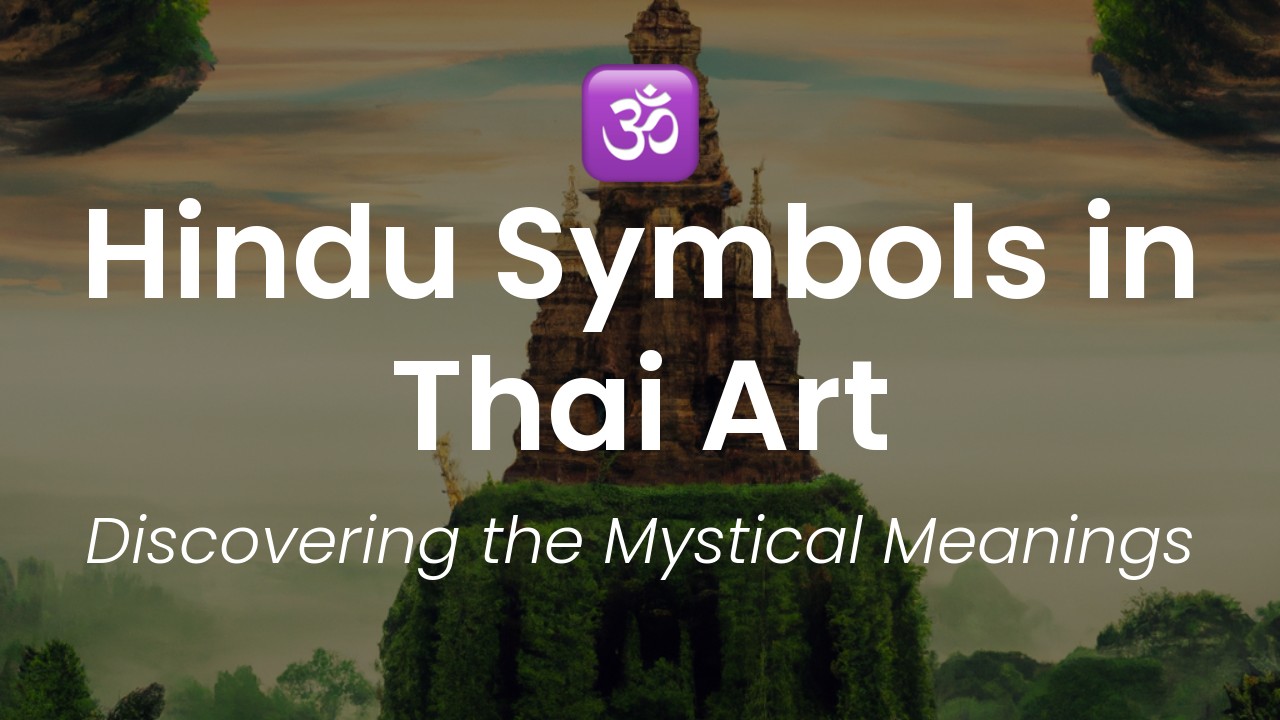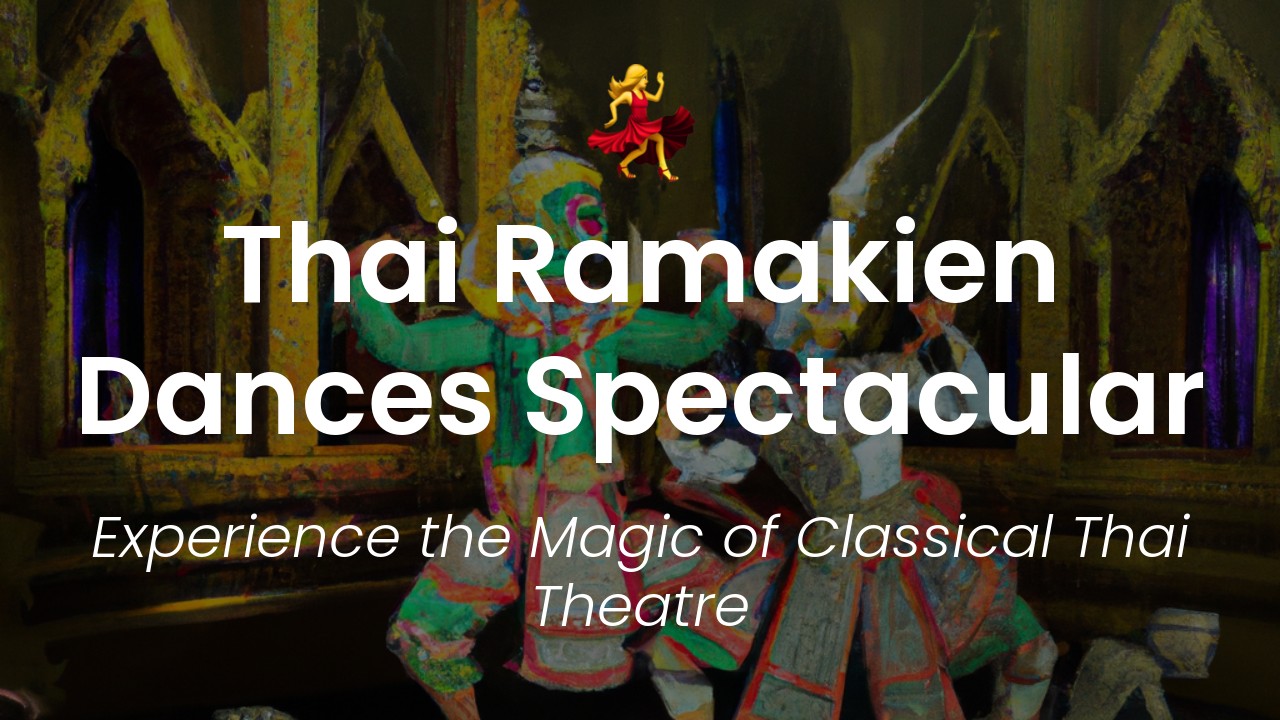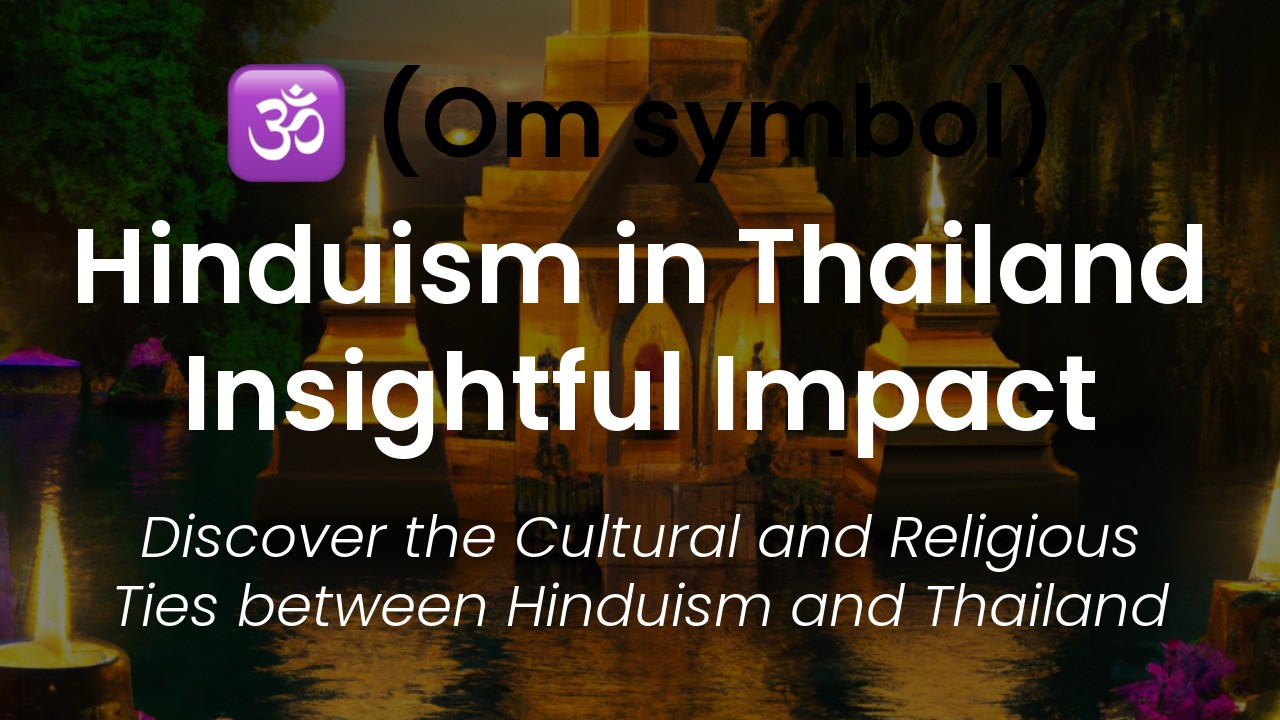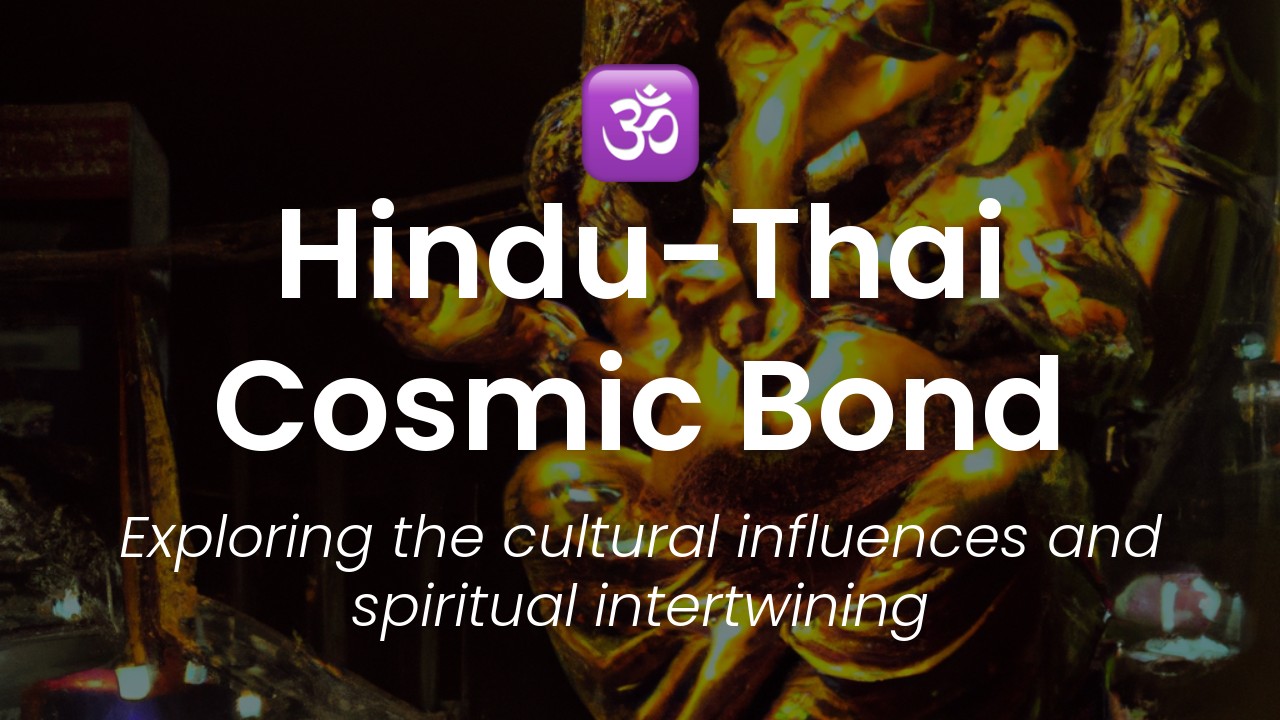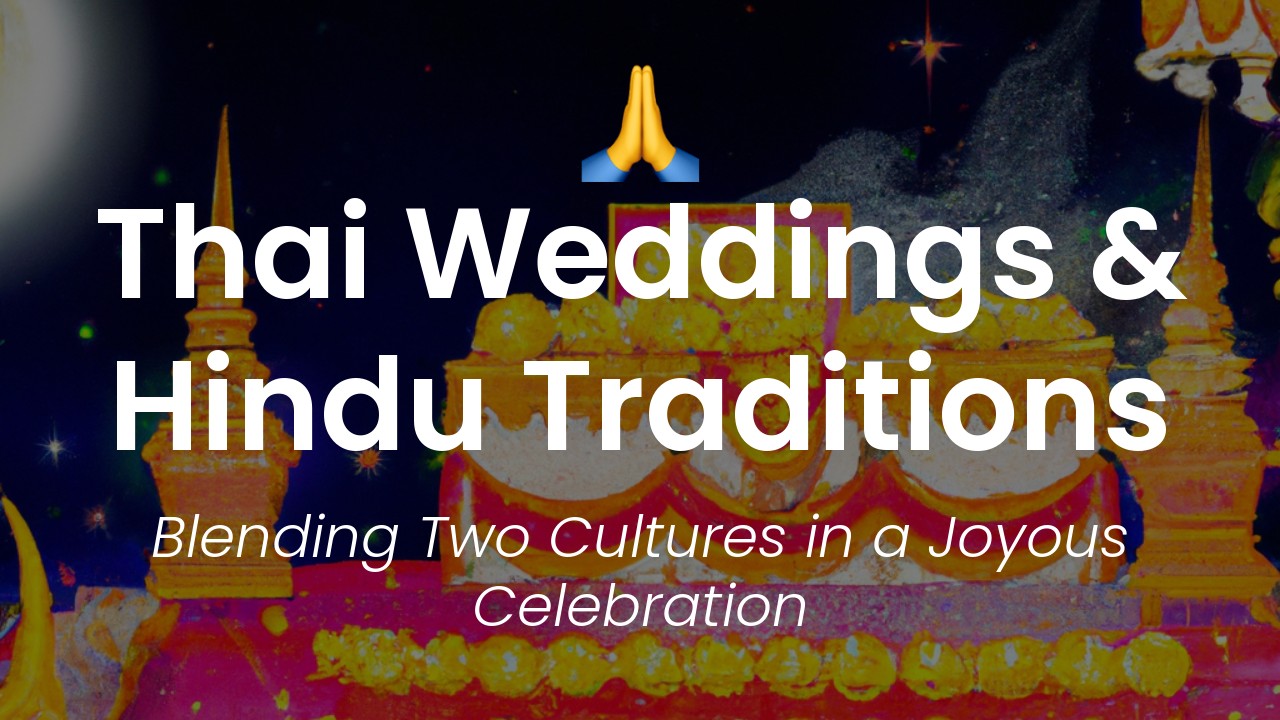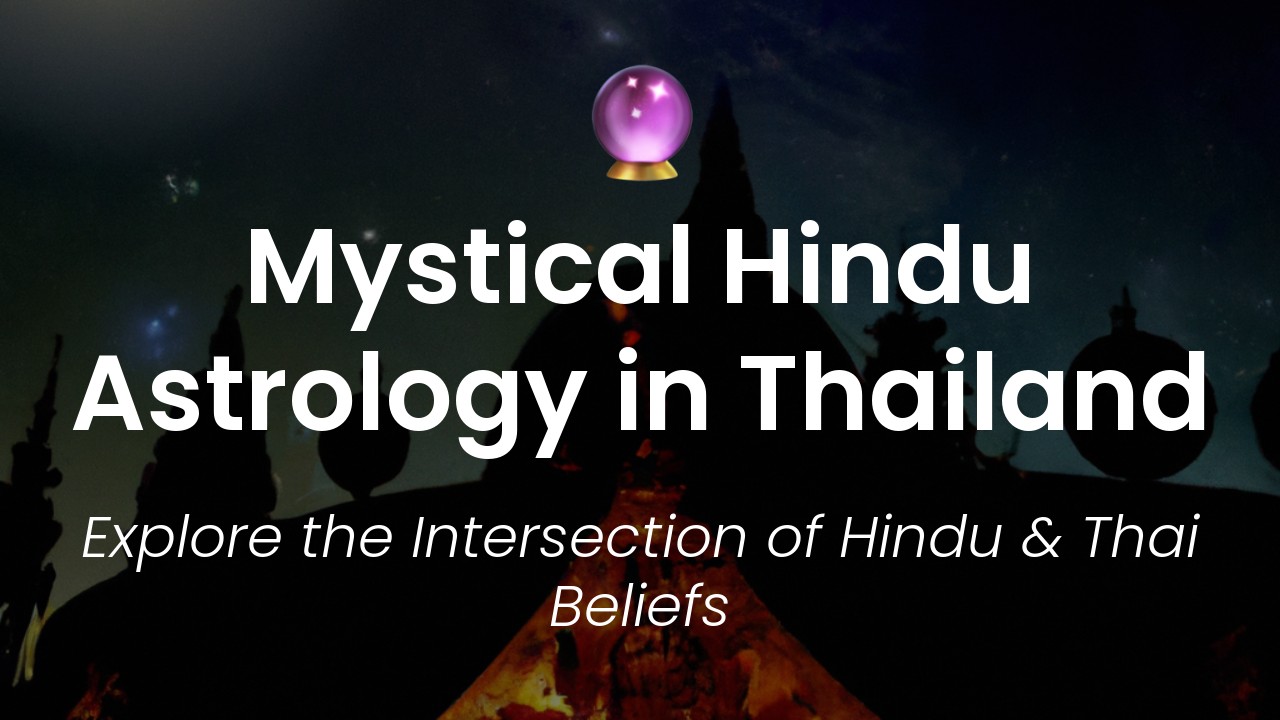As a Thai woman with a deep appreciation for art and culture, I have always been fascinated by the intricate designs and symbolism found in Hindu art. While many people may only see the beauty on the surface, each element of Hindu artwork is infused with rich meaning and history.
The connection between Hinduism and Thai culture dates back centuries, and it is reflected in the art and architecture of many significant landmarks throughout the country. From the majestic temples in Bangkok to the intricate murals at the ancient city of Ayutthaya, the intricate designs and symbolism found in Hindu art continue to captivate visitors from around the world.
But what do these symbols mean, and why are they so prevalent in Thai art? Through my research and personal experiences, I have found that understanding the significance of these symbols is essential in unlocking the stories and mysteries that lie behind this beautiful art form.
Join me as we delve into the world of Hindu symbolism in Thai art. Together, we will explore the meanings behind common symbols, such as the lotus flower and the elephant, and discover the fascinating stories that connect many of these symbols to ancient Hindu mythology. Whether you are an art lover, a culture enthusiast, or simply curious about Thai history, this blog article is sure to leave you with a greater appreciation and understanding of the intricate detail and rich history behind Hindu art in Thailand.
Common Hindu Symbols in Thai Art
Thai art is an important part of Thailand's cultural heritage, and one of the more significant influences on Thai art is Hinduism. Hinduism is a religion that has its roots in India, but it has spread to many other parts of the world. In Thailand, Hinduism has had a significant impact on art and culture, and many of the symbols and themes from Hinduism are found in Thai art today.
Here are some of the most common Hindu symbols that are found in Thai art:
Om Symbol
The Om symbol is one of the most important Hindu symbols and it is also used in many other spiritual practices, including Buddhism. The symbol represents the sound of the universe and is believed to be the source of all creation. In Thai art, the Om symbol is often seen as a decorative motif, and it is sometimes seen as part of a larger design.
Ganesha
Ganesha is one of the most recognizable Hindu deities and is known as the "remover of obstacles". He is often depicted with the head of an elephant and has a round belly. In Thai art, Ganesha is often the subject of paintings and sculptures, and he is also used as a decorative motif in architecture and design.
Lotus Flower
The lotus flower is a symbol of purity, enlightenment, and a new beginning. In Hinduism, the lotus is often associated with the goddess Lakshmi, who is the goddess of wealth and prosperity. In Thai art, the lotus is a common motif and is often seen in paintings, sculptures, textiles, and more.
Naga
The Naga is a serpent-like being that is often associated with water. In Hinduism, the Naga is the king of the underworld and is believed to be a protector of human life. In Thai art, the Naga is often depicted in architecture, paintings, textiles, and other art forms. It is also sometimes used as a decorative motif.
Hanuman
Hanuman is a Hindu deity who is often depicted as a monkey. He is known for his strength, agility, and loyalty. In Thai art, Hanuman is often seen in paintings and sculptures, and he is also used as a decorative motif.
Shiva
Shiva is one of the most significant Hindu deities and is known as the "destroyer" or "transformer". He is often depicted with multiple arms, holding various weapons and objects. In Thai art, Shiva is often seen in paintings and sculptures, and he is also used as a decorative motif in architecture and design.
The Peacock Feather
The peacock feather is a symbol of beauty and spirituality in Hinduism and is often associated with the goddess Saraswati. In Thai art, the peacock feather is often seen in paintings, textiles, and other forms of art. It is also sometimes used as a decorative motif.
Krishna
Krishna is a Hindu deity who is often depicted as a young boy or a young man. He is known for his love of music and dance, and for his playful, mischievous spirit. In Thai art, Krishna is often depicted in paintings and sculptures, and he is sometimes used as a decorative motif in architecture and design.
The Swastika
The swastika is an ancient symbol that has been used by many cultures throughout history, including Hinduism. In Hinduism, the swastika is a symbol of good luck, prosperity, and well-being. In Thai art, the swastika is sometimes seen as a decorative motif, but it should be noted that in recent history it has become associated with the Nazi party and is seen as a negative symbol.
The Role of Colors in Hindu Symbolism
In Hinduism, colors have a significant role in symbolism. Each color is thought to have a different meaning and significance, and this symbolism is often reflected in Thai art. Here are some of the most common colors used in Hindu symbolism and their meanings:
Red
Red is a symbol of passion, love, and fertility. It is also associated with fire and is often used to represent the element of fire in Hinduism.
Yellow
Yellow is a symbol of knowledge, learning, and wisdom. It is also associated with the sun and is often used to represent the sun in Hinduism.
Orange
Orange is a symbol of purity, spirituality, and renunciation. It is often worn by Hindu holy men and is associated with the element of fire.
Green
Green is a symbol of life, growth, and renewal. It is also associated with the earth and is often used to represent the element of earth in Hinduism.
Blue
Blue is a symbol of the divine and is often associated with the god Vishnu. It is also associated with the element of water and is used to represent the water in Hinduism.
White
White is a symbol of purity, innocence, and peace. It is often used in Hinduism to represent the gods and goddesses.
The Meaning Behind Different Deities
In Hinduism, there are many deities, each with their own unique personality, story, and symbolism. Here are some of the most common deities found in Thai art and their meanings:
Brahma
Brahma is the creator god in Hinduism and is often depicted with four heads and four arms. He is associated with creation, knowledge, and wisdom.
Vishnu
Vishnu is the preserver god in Hinduism and is often depicted with blue skin, four arms, and holding various objects and weapons. He is associated with protection, loyalty, and love.
Shiva
Shiva is the destroyer or transformer god in Hinduism and is often depicted with multiple arms and holding various weapons and objects. He is associated with destruction, transformation, and change.
Lakshmi
Lakshmi is the goddess of wealth, prosperity, and good fortune. She is often depicted with four arms holding various objects and sitting on a lotus flower.
Kali
Kali is the goddess of time, change, and death. She is often depicted with a stark, black appearance and is associated with power, destruction, and transformation.
Hindu Epics in Thai Art
In addition to deities, Hinduism is also characterized by its rich history and stories. Two of the most well-known Hindu epics are the Ramayana and the Mahabharata, both of which have had a significant impact on Thai art and culture.
The Ramayana
The Ramayana is an ancient Sanskrit epic that tells the story of the prince Rama and his wife Sita. The story emphasizes the importance of loyalty, duty, and righteousness. It has had a significant influence on Thai art, particularly in traditional dance performances.
The Mahabharata
The Mahabharata is another ancient Sanskrit epic that tells the story of the Kuru dynasty and the battle for the throne between two cousins. The story emphasizes the importance of honor, righteousness, and karma. It has had a significant influence on Thai art, particularly in traditional dance performances and murals.
The Importance of Lotus Symbolism
The lotus flower is a symbol that is commonly associated with Hinduism, as well as Buddhism and other spiritual practices. In Hinduism, the lotus represents purity, enlightenment, and rebirth. It is often associated with various gods and goddesses, particularly Lakshmi.
In Thai art, the lotus is a common motif and is often seen in paintings, textiles, and other forms of art. It is also used in architecture and design, particularly in the form of lotus-shaped decorative elements.
Contemporary Thai Art and Hindu Influences
While traditional Thai art has been strongly influenced by Hinduism, contemporary Thai art is more diverse in terms of influences and styles. However, the influence of Hinduism and its symbols and themes can still be seen in many contemporary Thai artworks.
For example, artist Rirkrit Tiravanija has explored the concepts of karma and reincarnation in his works, while artist Mit Jai Inn has used the lotus as a recurring motif in his paintings. Other contemporary Thai artists have been inspired by Hindu deities and epics in their work.
In conclusion, Hinduism has had a significant impact on Thai art and culture, and its symbols and themes can be seen in many different forms of Thai art. Whether in traditional paintings and sculptures or in contemporary works, the influence of Hinduism is an important part of Thailand's cultural heritage and artistic expression.

